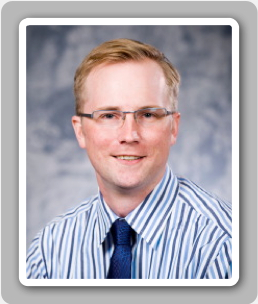Dr. Kyle B. Reed
Associate Professor
Department of Mechanical Engineering
University of South Florida
Email: kylereed@eng.usf.edu
Phone: (813) 974-2385
Office: ENC 2503, USF Tampa Campus
Curriculum Vitae (pdf)
Rehabilitation Engineering and Electromechanical Design Lab webpage
Research Experience:
- Associate Professor, University of South Florida, Department of Mechanical Engineering, 2016 - present.
- Assistant Professor, University of South Florida, Department of Mechanical Engineering, 2009 - 2016.
- Postdoctoral Researcher, Laboratory for Computational Sensing and Robotics, The Johns Hopkins University, 2007 - 2009.
- Graduate Research Assistance, Northwestern University, 2002 - 2007.
- Researcher, Los Alamos National Laboratory, 1998 - 2001.
Education/Training:
- Post Doc, The Johns Hopkins University, Robotics, 2007 - 2009.
- Ph.D., Northwestern University, Mechanical Engineering, 2007.
- M.S., Northwestern University, Mechanical Engineering, 2004.
- B.S., University of Tennessee-Knoxville, Mechanical Engineering, 2001.
Research Interests: (link to current research projects)
Rehabilitation engineering, haptics, human-machine interaction, medical robotics, and engineering education.
List of Publications: REED Lab publications and citation tracker
Biography:
Previously, I was a Post-Doctoral Fellow working jointly in the Haptics Exploration and LIMBS labs from 2007 until 2009. I was mainly working on developing a minimally invasive system capable of driving a needle to a desired position inside a tissue, largely to be used for biopsies and brachytherapies. Part of this project involved analyzing the torsion that develops as the steerable needle is rotated to control the angle of insertion. Additionally, I developed the prototype of the Gait Enhancing Mobile Shoe (GEMS).
I graduated from Northwestern University in June, 2007 where I worked in LIMS. I focused on Human-Robot-Human (HRH) interaction. The results from this research are applicable to a wide range of tasks from teleoperation to physical therapy. In short, I studied how two people physically interact with each other through an object. An example of this would be jointly moving a large table or exchanging a glass. I then applied the interaction found in two people to a robot working with a person.
I received my B.S. in Mechanical Engineering from the University of Tennessee at Knoxville (UTK) in 2001. I spent four summers during college working at Los Alamos National Laboratory developing simulation code using Java and performing finite element models of an explosion containment vessel. During my Junior and Senior years of college, I was an undergraduate teaching assistant in the Freshman Engineering Program at UTK.
My Teaching Philosophy:
I believe it is important for students to have a solid knowledge of fundamental concepts that are taught in the classroom. However, I also strive to equip students to learn on their own since the world's engineering needs are ever changing. I teach them how to learn and understand new concepts inside and outside of the classroom by fostering an interactive environment and by asking them leading questions to stimulate independent thinking. When a student is prompted to answer, they must contemplate the question to a greater extent than if they were simply told the answer. They learn to think about how to solve the problem instead of memorizing certain steps to take. Over time, the students begin to learn the right questions to ask of themselves, which will help them acquire the skills that will be required throughout their careers.
I also strive to build intuition while giving the students a framework for approaching problems in a logical order. One way I build intuition is by asking the students to estimate the answer based on prior knowledge of similar systems. I then help them analyze their estimates or solutions while teaching them more advanced methods. Questioning and analyzing allows students to figure out an adequate method to solving the problem and bridges their existing knowledge to advanced concepts.
In addition to regular homework and quizzes in my classes, I like to incorporate one large project integrating multiple concepts and tools of the class. This project adds a sense of accomplishment and increases the chances they will remember and apply the knowledge from the class. For instance, in the Haptics class, each student (or team of two) will come up with an experiment. The project will require finding the necessary background information, building a test device, conducting experiments with human subjects, and performing the statistics to analyze the data. Even for undergraduates, I expect that some of these project could turn into papers worthy of being accepted to a relevant conference.
Courses Taught:
- Advanced Engineering Mathematics II, Fall 2016
- Mechanical Controls, Spring 2016
- Mechanical Controls, Fall 2015
- Haptics, Spring 2015
- Mechanical Controls, Fall 2014
- Haptics, Spring 2014 (project photos)
- Advanced Engineering Mathematics II, Fall 2013
- Haptics, Spring 2013 (project photos)
- Mechanical Controls, Fall 2012
- Haptics, Spring 2012 (project photos)
- Advanced Engineering Mathematics II, Fall 2011
- Mechanical Controls, Fall 2011
- Haptics, Spring 2011 (project photos)
- Mechanical Controls, Fall 2010
- Haptics, Spring 2010 (project photos)
- Mechanical Controls, Fall 2009
- Electronics and Instrumentation, Spring 2009
|
